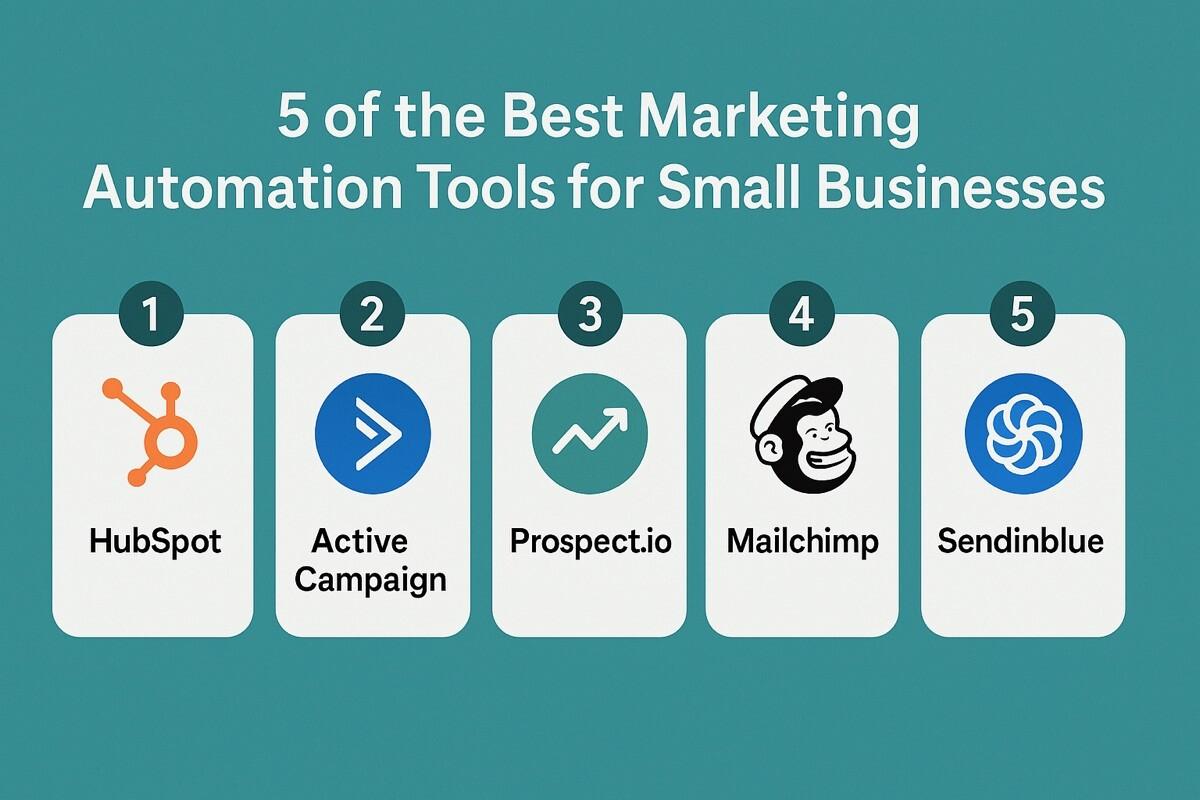Unlock the true potential of your website with Conversion Rate Optimization (CRO)! By fine-tuning design and content, you can transform visitors into loyal customers. Discover our 8+ best strategies to elevate your conversion game and drive success today!
What is Conversion Rate Optimization? 8+ Best Picks
In the bustling world of digital marketing, where every click counts and every visit holds the potential for transformation, there lies a powerful strategy that can elevate your online presence to new heights: Conversion Rate Optimization (CRO). But what exactly is CRO, and why should it matter to you? Imagine unlocking the hidden potential of your website, turning casual visitors into loyal customers with just a few strategic adjustments. It’s not just a dream—it’s a very attainable reality.
In this article, we will explore the essence of Conversion Rate Optimization, illuminating its significance in today’s competitive landscape. We’ll delve into the art and science behind maximizing the effectiveness of your online efforts and introduce you to our top picks that can propel your conversion rates to unprecedented levels. Whether you’re a seasoned marketer or a budding entrepreneur, embracing CRO can transform your approach to digital engagement and drive tangible results. Join us on this journey to discover how the right strategies can not only enhance your website’s performance but also inspire lasting connections with your audience. Let’s embark on the path to optimizing your conversions and unlocking the true potential of your online business!
Understanding the Essentials of Conversion Rate Optimization
Conversion Rate Optimization (CRO) is a critical component of digital marketing that focuses on increasing the percentage of visitors who complete a desired action on a website. This could range from making a purchase to signing up for a newsletter. By understanding the essentials of CRO, businesses can transform their web traffic into tangible results.
At its core, CRO revolves around understanding user behavior and the journey they take on your site. Here are some key aspects to consider:
- User Experience (UX): A seamless and intuitive user experience is fundamental. Analyze how users interact with your site and identify any pain points that may hinder conversion.
- A/B Testing: Implementing A/B tests allows you to compare different versions of your landing pages. This method helps you determine what elements resonate best with your audience.
- Compelling CTAs: Calls to Action (CTAs) should be clear, persuasive, and strategically placed. Experiment with colors, text, and positioning to find the combination that encourages clicks.
- Analytics and Data Tracking: Utilize analytics tools to gather data on user behavior. Understanding where visitors drop off in the conversion funnel can help you make informed improvements.
Moreover, one effective strategy for enhancing conversion rates is optimizing your website’s content. This includes creating engaging copy, relevant visuals, and ensuring that the information is accessible and easy to digest. Here are some content optimization tips:
- Use storytelling: Captivate your audience with stories that resonate and connect emotionally.
- Highlight benefits: Clearly outline how your product or service solves a problem or adds value to the user’s life.
- Incorporate social proof: Testimonials, reviews, and case studies build trust and can significantly influence buying decisions.
To illustrate how different strategies can impact conversion rates, consider the following table that highlights the average conversion rates across various industries:
| Industry | Average Conversion Rate |
|---|---|
| E-commerce | 2.86% |
| Finance | 5.01% |
| Travel | 3.55% |
| Education | 4.75% |
| Healthcare | 3.10% |
Ultimately, mastering Conversion Rate Optimization involves a combination of analytical thinking, creativity, and a deep understanding of your audience. By focusing on these essential elements, you can significantly enhance your website’s performance and maximize your return on investment.
The Importance of Conversion Rate in Your Business Growth
In the fast-paced world of digital marketing, understanding and improving your conversion rate is crucial for sustainable business growth. A high conversion rate signifies that a larger percentage of your visitors are taking the desired actions, whether it’s making a purchase, signing up for a newsletter, or filling out a contact form. This not only enhances your revenue but also boosts your brand’s credibility and online presence.
Conversion rate optimization (CRO) is not just a one-time task; it’s a continuous process that requires regular analysis and adjustments. By monitoring user behavior and preferences, you can identify the pain points in your customer journey. This proactive approach allows you to make informed decisions that can significantly increase your conversion rates. Here are some essential elements that highlight the importance of focusing on your conversion rate:
- Increased Revenue: Enhancing your conversion rate directly impacts your bottom line. Even a small percentage increase can lead to significant improvements in revenue.
- Better ROI: Optimizing your conversion rate means you get more value out of your existing traffic. This leads to a higher return on investment for your marketing efforts.
- Improved User Experience: CRO involves refining your website and marketing strategies based on user feedback. This leads to a more intuitive user experience, fostering customer loyalty.
- Competitive Advantage: In a crowded market, businesses that efficiently convert visitors into customers often outperform their competitors.
To truly harness the power of conversion rate optimization, it’s essential to establish a data-driven culture within your organization. Utilizing tools like A/B testing, heat maps, and user surveys can provide invaluable insights into consumer behavior. By analyzing these metrics, you can tailor your strategies to meet the specific needs of your audience.
| Strategy | Benefit |
|---|---|
| Personalization | Increases engagement by tailoring content to individual preferences. |
| Clear Call-to-Action | Guides users towards desired actions, minimizing confusion. |
| Mobile Optimization | Ensures a seamless experience for mobile users, capturing more conversions. |
| Trust Signals | Boosts credibility through testimonials and secure payment icons. |
Ultimately, the importance of conversion rate cannot be overstated; it is a pivotal component of your business strategy. By prioritizing CRO, you are not just improving your numbers; you are creating meaningful interactions with your customers that lead to lasting relationships and brand loyalty. Focus on optimizing your conversion rate today, and watch your business reach new heights.

Identifying Key Metrics for Effective Optimization
To embark on a successful journey of conversion rate optimization, identifying the right metrics is paramount. These metrics act as the compass, guiding you toward what truly impacts your bottom line. Focusing on key performance indicators (KPIs) not only illuminates areas for improvement but also helps allocate resources effectively, ensuring that every effort contributes to growth.
Among the plethora of metrics available, some stand out as essential for any optimization strategy:
- Conversion Rate: The most fundamental metric, it measures the percentage of visitors who complete a desired action, such as making a purchase or signing up for a newsletter.
- Average Order Value (AOV): This metric helps you understand how much revenue you generate per transaction, providing insights into customer purchasing behavior.
- Bounce Rate: Reflecting the percentage of visitors who leave your site after viewing only one page, a high bounce rate signals the need for better engagement strategies.
- Customer Acquisition Cost (CAC): Knowing how much you spend to acquire a new customer allows you to balance between marketing expenses and revenue generation.
- Return on Investment (ROI): This crucial metric assesses the profitability of your marketing efforts, helping you to determine which strategies yield the best returns.
In addition to these primary metrics, gaining insight into user behavior can significantly enhance your optimization tactics. Consider tracking:
- Page Load Time: A slow-loading page can deter potential customers, making this a critical metric to monitor.
- Abandonment Rate: Particularly relevant for e-commerce, this metric shows the percentage of shoppers who start but do not complete their transactions.
- Click-Through Rate (CTR): Measuring the effectiveness of your advertising and email campaigns, this metric indicates how often people click on your links compared to how many saw them.
As you gather data, it’s essential to create a framework that allows for analysis and actionable insights. A well-structured table can help visualize the performance of these metrics over time:
| Metric | Current Value | Target Value | Notes |
|---|---|---|---|
| Conversion Rate | 2.5% | 5% | Focus on enhancing user experience |
| Average Order Value | $75 | $100 | Introduce bundling options |
| Bounce Rate | 60% | 40% | Improve landing page content |
By keeping a close eye on these metrics, you’ll be equipped to make data-driven decisions that lead to meaningful improvements. Always remember, the path to successful conversion rate optimization is paved with continuous testing, analysis, and refinement. This iterative process will not only enhance your website’s performance but also foster a deeper connection with your audience.

Crafting Compelling Calls to Action for Maximum Impact
When it comes to driving conversions, the right call to action (CTA) can make all the difference. A compelling CTA not only guides your audience but also ignites their desire to engage with your brand. Here are some proven techniques to craft CTAs that resonate:
- Use Action-Oriented Language: Start with a verb that encourages immediate action. Words like “Discover,” “Join,” or “Get Started” create a sense of urgency.
- Create a Sense of Urgency: Incorporate phrases that convey limited time offers or exclusivity, such as “Sign Up Today” or “Limited Spots Available!”
- Simplify the Process: Make it clear what the next step is. Instead of saying ”Learn More,” try ”Start Your Free Trial” to specify what users can expect.
- Highlight Benefits: Communicate what users will gain by taking action. For example, “Download Your Free Guide” emphasizes the value of the content.
- Personalize Where Possible: Tailor your CTAs to your audience’s preferences. Use segmentation to speak directly to different user groups.
To further illustrate the impact of well-crafted CTAs, consider the following table that compares the effectiveness of different styles:
| CTA Style | Conversion Rate |
|---|---|
| Action-Oriented | 15% |
| Urgency-Based | 22% |
| Value-Focused | 18% |
| Personalized | 25% |
Testing different CTAs through A/B testing can reveal what resonates best with your audience. Don’t shy away from experimenting with various phrases, colors, and placements. A/B testing allows you to refine your approach and find the perfect blend that encourages conversions.
Lastly, remember that CTAs shouldn’t just be placed at the end of your content. Strategically position them throughout your website, including within blog posts, landing pages, and even emails. This omnipresence increases the likelihood of engagement by offering multiple opportunities for your audience to take action.

Enhancing User Experience to Boost Conversions
To significantly enhance user experience, it’s essential to focus on the intersection between design and functionality. A user-friendly website not only attracts visitors but also encourages them to stay longer and engage more deeply with the content. Consider the following strategies to create an environment that fosters enjoyment and trust:
- Intuitive Navigation: Simplifying the navigation structure helps users find what they need quickly. A well-organized menu, breadcrumb links, and clear categories lead to a seamless browsing experience.
- Responsive Design: With the growing use of mobile devices, ensuring your site is mobile-friendly can drastically improve user satisfaction. A responsive design adapts to various screen sizes, making it accessible to all users.
- Fast Load Times: Speed is crucial; a delay of just a few seconds can lead to increased bounce rates. Optimize images, leverage browser caching, and reduce server response time to create a swift browsing experience.
- Engaging Content: Quality content captivates users, encouraging them to explore further. Use compelling headlines, engaging visuals, and valuable information to keep visitors interested.
- Clear Call-to-Actions (CTAs): Strategically placed CTAs guide users toward desired actions. Use contrasting colors and action-oriented text to make them stand out and entice users to click.
Another vital aspect of improving user experience involves personalizing interactions. By leveraging data analytics and user behavior insights, businesses can tailor content and offers to meet the specific needs and preferences of their audience. Personalization strategies include:
- Dynamic Content: Present content that adapts based on user preferences or past interactions, making the experience feel unique and relevant.
- Targeted Email Campaigns: Craft personalized email communications that resonate with specific user segments, enhancing engagement and driving conversions.
- User Journey Mapping: Understand the various touchpoints users encounter on their journey to conversion. Optimize these points by addressing potential pain points and enhancing positive experiences.
Lastly, continuously testing and iterating on your user experience is key to long-term success. Implement A/B testing to compare different versions of your website elements and identify which designs or strategies yield the best results. By making data-driven decisions, businesses can refine their approach and create a more effective user experience.
| Strategy | Benefit |
|---|---|
| Intuitive Navigation | Improves discoverability of content |
| Responsive Design | Enhances accessibility on mobile devices |
| Fast Load Times | Reduces bounce rates |
| Engaging Content | Keeps users on the site longer |
| Clear CTAs | Increases conversion likelihood |
Leveraging A/B Testing for Data-Driven Decisions
In the realm of digital marketing, A/B testing has emerged as an essential tool for making informed, data-driven decisions. By comparing two versions of a web page or an element (like a call-to-action button), businesses can uncover which variation resonates more effectively with their audience. This method not only helps optimize conversion rates but also fosters a culture of continuous improvement.
One of the most powerful aspects of A/B testing is its ability to provide clear, quantifiable results. When you implement a systematic approach to testing, you can:
- Identify what truly engages your audience – Rather than relying on guesswork, A/B testing allows you to see what your visitors prefer based on actual behavior.
- Minimize risks associated with major changes – Implementing a significant change without data can backfire. A/B testing lets you experiment on a smaller scale first.
- Enhance user experience – By analyzing which elements lead to higher engagement, you can refine your website to create a more satisfying user journey.
For effective A/B testing, it’s crucial to establish clear goals and metrics. Consider utilizing the following strategies:
| Strategy | Description |
|---|---|
| Define Your Objective | Clearly state what you aim to achieve, whether it’s increasing click-through rates, reducing bounce rates, or boosting sales. |
| Segment Your Audience | Target specific demographics to see how different groups interact with various elements. |
| Analyze Results Thoroughly | Use statistical analysis to determine which variation performs better and understand why. |
By leveraging A/B testing, businesses can turn insights into actionable strategies, leading to enhanced performance and higher conversion rates. It transforms the approach to decision-making, shifting the focus from intuition to evidence. This shift not only empowers marketers but also builds trust with stakeholders who demand accountability and results.
the beauty of A/B testing lies in its scalability. Whether you’re a small startup or an established enterprise, you can tailor your experiments to fit your needs and resources. Embrace this method as a cornerstone of your conversion rate optimization strategy, and watch as your data-driven decisions pave the way for sustained growth and success.
Utilizing Analytics to Uncover Conversion Opportunities
In today’s digital landscape, data is more than just numbers; it’s the heartbeat of your business strategy. By leveraging analytics, you can unlock conversion opportunities that may have previously gone unnoticed. Every click, visit, and interaction on your website holds valuable insights waiting to be explored. The key is knowing where to look and how to interpret the data.
Identifying User Behavior: Start by delving into user behavior analytics. Tools like Google Analytics provide a wealth of information about your visitors. Pay close attention to metrics such as:
- Bounce Rate: A high bounce rate may indicate that users aren’t finding what they expect.
- Session Duration: Longer sessions often correlate with higher engagement and conversion potential.
- Conversion Path: Understanding the journey your users take can reveal friction points where you can improve.
Next, consider segmenting your data. Not all users are created equal, and analyzing specific demographics can uncover unique conversion opportunities. For instance, you might find that mobile users behave differently than desktop users. Tailoring your approach based on these segments can lead to significant improvements.
Implementing A/B Testing: Use A/B testing to refine your strategies based on data-driven insights. By creating variations of landing pages, headlines, or calls to action, you can empirically determine which elements drive conversions. Keep track of the results to enhance your optimization efforts continuously.
Utilizing heat maps is another powerful way to visualize user interactions. These tools help you see where users click most often, scroll to, and linger. Analyzing heat maps can highlight areas that either attract attention or are completely overlooked. This information is crucial for redesigning your pages to cater to user preferences.
| Metric | Optimal Value | Actionable Insight |
|---|---|---|
| Bounce Rate | < 40% | Optimize landing pages to align with user expectations. |
| Session Duration | 2-3 minutes | Create engaging content to keep users on your site longer. |
| Conversion Rate | 2-5% | Test different CTAs and offers to boost conversions. |
cultivating a culture of continuous improvement is essential. Use your findings to inform future marketing strategies and website adjustments. Remember, analytics is not a one-time effort but an ongoing process of learning and adapting. By consistently evaluating your analytics data, you can stay ahead of the curve and optimize your conversion potential.

Personalization Strategies to Engage and Convert Visitors
In the digital landscape, capturing the attention of visitors is just the beginning; the real challenge lies in converting them into loyal customers. Personalization strategies are essential tools in this journey, allowing businesses to create tailored experiences that resonate with individual users. By understanding visitor preferences and behaviors, you can design interactions that not only engage but also drive conversions.
Segmentation is a cornerstone of personalization. By categorizing your audience based on demographics, interests, or past behaviors, you can deliver targeted messages that speak directly to them. For instance, a visitor who frequently browses eco-friendly products will respond more positively to promotions that highlight sustainability. This targeted approach enhances the relevance of your offerings, increasing the likelihood of conversion.
Another powerful strategy is dynamic content. This involves changing website elements in real-time based on user data. For example, displaying product recommendations based on previous purchases or browsing history can significantly enhance user experience. Imagine a visitor landing on a site and immediately seeing products tailored to their tastes—this not only captivates but also guides them toward making a purchase.
Implementing behavioral triggers can further boost engagement. These triggers are automated actions sent to users based on their interactions with your site. For instance, if a user abandons their shopping cart, a gentle reminder email with incentives to complete their purchase can make a world of difference. This technique capitalizes on the psychology of urgency and can turn a potential loss into a successful conversion.
leveraging customer feedback is invaluable in refining your personalization strategies. Actively seeking input through surveys or feedback forms can provide insights into visitor preferences and pain points. By incorporating this feedback into your strategy, you not only demonstrate that you value their opinions but also create a more tailored experience that addresses their needs and desires.
As you implement these strategies, tracking and analyzing the results is crucial. Utilizing analytics tools can offer a glimpse into what works and what doesn’t, allowing for continuous optimization of your approach. Transforming data into actionable insights can lead to a more refined personalization strategy that evolves with your audience’s needs.
The Power of Trust Signals in Building Customer Confidence
In the digital landscape, where competition is fierce and choices are abundant, the presence of trust signals can significantly sway customer decisions. Trust signals serve as the invisible thread that connects businesses with consumers, fostering an environment where confidence flourishes. By strategically incorporating these elements into your website, you can create a more inviting space for potential customers, ultimately driving conversions.
Among the most effective trust signals are:
- Customer Reviews and Testimonials: Authentic feedback from previous buyers can illuminate the value of your products or services. Displaying positive testimonials prominently helps to build credibility.
- Security Certifications: Visual indicators such as SSL certificates or security badges reassure customers that their sensitive information is protected during transactions, alleviating concerns about online security.
- Social Proof: Showcasing user-generated content, like photos or videos of satisfied customers using your products, can create a relatable connection and encourage new visitors to make a purchase.
- Money-Back Guarantees: Offering a no-questions-asked refund policy can entice hesitant buyers by minimizing perceived risk, making them more likely to take the plunge.
- Industry Awards and Recognition: If your business has received awards or recognition, prominently display these accolades to enhance your reputation and build a sense of authority.
The combination of these trust signals can paint a comprehensive picture of reliability and quality in the minds of consumers. For instance, when a potential customer sees a plethora of positive reviews accompanied by security badges and a clear return policy, their confidence in transacting with you skyrockets. This is particularly relevant for e-commerce sites, where the lack of face-to-face interaction can lead to skepticism.
To quantify the impact of trust signals, consider this simple comparison:
| Trust Signal Type | Effect on Conversion Rate |
|---|---|
| Customer Reviews | Increase by up to 18% |
| Security Badges | Increase by up to 25% |
| Money-Back Guarantees | Increase by up to 30% |
| Social Proof | Increase by up to 15% |
In essence, trust signals act as the modern-day equivalent of a handshake, offering assurance to customers that they are making the right choice. By investing in these elements, you not only enhance the user experience but also optimize your conversion rates, leading to sustainable business growth.

Optimizing Landing Pages for Higher Conversion Rates
To truly harness the potential of your landing pages, it’s crucial to focus on elements that resonate with your target audience. Effective design and compelling content are foundational, but knowing how to combine these components can skyrocket your conversion rates. Start by ensuring your landing page has a clear objective; whether it’s capturing leads or driving sales, every element should serve this purpose.
One of the key factors in landing page optimization is the call-to-action (CTA). This is where you persuade visitors to take the next step. Make your CTA buttons prominent—use contrasting colors and actionable language like “Get Your Free Trial” or “Join the Community”. Placement matters too; ideally, CTAs should be visible without scrolling and strategically repeated throughout the page.
The headline is your first impression. It should be concise yet powerful, immediately grabbing attention. Use subheadings to break up sections and maintain reader engagement. Incorporate emotional triggers and benefits in your copy, showing visitors exactly what they stand to gain. A well-crafted headline could make the difference between a bounce and a conversion.
| Element | Impact on Conversion |
|---|---|
| CTA Placement | Increases visibility and encourages action |
| Image Quality | Enhances trust and engagement |
| Loading Speed | Affects user experience and retention |
| Mobile Optimization | Essential for reach and accessibility |
In addition to the layout and design, social proof plays a critical role. Incorporate testimonials, reviews, or case studies that showcase real success stories. When potential customers see that others have benefited, they are more likely to trust your brand and convert. This element taps into the psychological principle of social validation, encouraging visitors to join a community of happy customers.
Lastly, continuous testing is fundamental. Use A/B testing to experiment with different headlines, layouts, and CTAs. Analyzing which variations perform better will provide invaluable insights, allowing you to refine your strategy over time. Remember, optimization is not a one-time task but an ongoing process that evolves as your audience and market change.

Harnessing the Influence of Social Proof in Marketing
In the realm of marketing, few elements wield as much power as social proof. This psychological phenomenon stems from our inherent tendency to look to others when making decisions, particularly in unfamiliar situations. By leveraging this instinct, brands can enhance their credibility and encourage potential customers to take the plunge.
Consider the following ways to effectively incorporate social proof into your marketing strategy:
- Customer Testimonials: Highlight reviews and testimonials from satisfied customers. Authentic voices resonate with potential buyers, fostering trust and motivating action.
- Influencer Endorsements: Collaborating with influencers can provide a significant boost. Their endorsement serves as social validation, influencing their followers and enhancing your brand’s reach.
- User-Generated Content: Encourage customers to share their experiences through photos, videos, and posts. This not only builds community but also showcases your product in real-life scenarios.
- Case Studies: Presenting detailed case studies that outline success stories helps potential clients visualize the benefits of your offering and instills confidence in your brand.
To further illustrate the impact of social proof, consider the following table that outlines key statistics associated with its effectiveness:
| Social Proof Type | Impact on Conversion Rate |
|---|---|
| Customer Reviews | Up to 270% increase |
| Testimonials | 29% higher conversion |
| Influencer Marketing | 6x more engagement |
| User-Generated Content | 79% say user content highly impacts purchase decisions |
Utilizing social proof not only enhances your marketing efforts but also strengthens your brand’s reputation. When consumers see others enjoying your products or services, they are more likely to envision themselves having a similar experience. In an increasingly competitive market, this psychological edge can be the difference between a fleeting visit to your site and a solid conversion.
Ultimately, the strategic application of social proof can transform your marketing landscape, fostering a sense of community and belonging among your customers. By promoting authenticity and connectivity, your brand can cultivate loyal followers who not only convert but also advocate for your offerings. Embrace this powerful tool, and watch as your conversion rates soar.

Mobile Optimization: Capturing the On-the-Go Audience
In today’s fast-paced digital landscape, where users are constantly on the move, ensuring your website is optimized for mobile devices is not just a luxury—it’s a necessity. With over 50% of global web traffic now coming from mobile devices, businesses that fail to cater to this on-the-go audience risk losing out on significant opportunities. Mobile optimization involves more than just responsive design; it encompasses a holistic strategy that enhances user experience, engagement, and ultimately, conversion rates.
To effectively capture this audience, consider the following strategies:
- Responsive Design: Ensure your website automatically adjusts to fit any screen size, providing an optimal viewing experience across all devices.
- Fast Load Times: Mobile users are often impatient. Optimize images, minimize code, and leverage browser caching to enhance load speed.
- Streamlined Navigation: Simplify your website’s menu and layout. A clutter-free interface allows users to find what they need quickly.
- Touch-Friendly Elements: Design buttons and links that are easily clickable on a mobile screen, reducing frustration for users trying to interact with your site.
- Mobile-Specific Features: Consider integrating features like click-to-call buttons, location services, and mobile-friendly forms to enhance user interaction.
Moreover, understanding user behavior on mobile is crucial. Analytics tools can provide insights into how mobile users interact with your site, allowing you to make informed decisions about design and functionality. For instance, tracking metrics such as bounce rate and average session duration can reveal areas needing improvement.
Additionally, A/B testing different mobile layouts can yield valuable data on what resonates best with your audience. Implementing these insights can lead to significant improvements in conversion rates. Here’s a simple table to illustrate potential changes that could enhance mobile performance:
| Mobile Feature | Impact on User Experience |
|---|---|
| Fast Loading Pages | Reduces bounce rates and increases time spent on site |
| Simplified Forms | Boosts conversion rates by minimizing friction |
| Clear Call-to-Action Buttons | Encourages user interaction and completion of desired actions |
Ultimately, mobile optimization is about creating an engaging experience that meets the needs of users in a fast-paced environment. By prioritizing mobile-first design, businesses can not only enhance their conversion rates but also foster lasting relationships with their customers. Embrace the challenge, and let your website be a beacon for the on-the-go audience.

Integrating Email Marketing to Nurture and Convert Leads
Integrating email marketing into your overall strategy is essential for nurturing leads and driving conversions. By creating targeted email campaigns, you can establish meaningful connections with potential customers, guiding them along the buyer’s journey. Let’s explore how effective email marketing can transform your lead conversion efforts.
Segment Your Audience: Understanding your audience is critical. Use segmentation to tailor your messages based on demographics, behaviors, and interests. This approach ensures that your content resonates with the specific needs of each group. Consider these segmentation strategies:
- Demographic Segmentation: Age, gender, location.
- Behavioral Segmentation: Past purchases, website activity.
- Interest-Based Segmentation: Preferences indicated through surveys or interactions.
Personalize Your Messaging: Personalization goes beyond using a recipient’s name in the subject line. Craft your emails to address the unique pain points and desires of your segments. Implementing dynamic content can significantly enhance engagement, ensuring your audience feels seen and valued.
Automate Your Campaigns: Leverage automation tools to nurture leads without overwhelming your team. Set up drip campaigns that deliver relevant content at strategic intervals. For instance, after a lead signs up, you can send a series of emails that gradually introduce them to your product or service, building trust and familiarity.
| Email Campaign Type | Purpose | Example Content |
|---|---|---|
| Welcome Series | Greet new subscribers and set expectations | “Thanks for joining! Here’s what you can expect…” |
| Educational Content | Provide value and establish authority | “5 Tips to Optimize Your Conversion Rate” |
| Promotional Offers | Encourage immediate action with a limited-time offer | “Get 20% off your first purchase – today only!” |
Monitor and Optimize: The key to successful email marketing lies in continuous improvement. Use metrics like open rates, click-through rates, and conversion rates to gauge effectiveness. A/B testing different elements of your emails—such as subject lines or call-to-action buttons—can provide insights into what resonates most with your audience.
Foster Engagement: Encourage interaction by incorporating polls, feedback requests, or social media links in your emails. Building a community around your brand fosters loyalty, making it more likely that leads will convert into paying customers. Remember, engagement is a two-way street, and the more you involve your audience, the higher your conversion potential.

Final Thoughts: Embracing Continuous Improvement for Success
In a rapidly evolving digital landscape, the pursuit of excellence should be a continuous journey rather than a destination. Embracing a mindset centered around improvement fosters resilience and adaptability, two essential traits for thriving in competitive markets. By prioritizing this approach, businesses can unlock new opportunities and enhance their overall performance.
Continuous improvement is not merely a strategy; it is a culture that influences every facet of an organization. To cultivate this culture, consider implementing the following practices:
- Regular Data Analysis: Continuously track and analyze user behavior and conversion metrics to identify areas for enhancement. This data-driven approach ensures that decisions are based on real insights.
- Iterative Testing: Adopt a mindset of experimentation. Use A/B testing to refine your strategies and understand what resonates best with your audience.
- Feedback Loops: Establish channels for gathering customer feedback. This direct input is invaluable for making informed adjustments to your offerings.
To visualize the impact of various conversion rate optimization strategies, consider the following table that illustrates the potential uplift from different techniques:
| Strategy | Potential Uplift |
|---|---|
| Enhanced Call-to-Actions | 15-30% |
| Personalized Content | 20-40% |
| Streamlined Checkout Process | 25-35% |
| Responsive Design | 10-20% |
The journey of continuous improvement requires commitment and an openness to adapt. As businesses implement effective strategies and embrace feedback, they not only improve their conversion rates but also foster deeper connections with their customers. This holistic approach bridges the gap between understanding user needs and delivering exceptional experiences.
Ultimately, those who embrace continuous improvement are not just aiming for short-term gains; they are laying the groundwork for sustained success. By integrating optimization practices into their core operations, businesses can create a robust framework that supports growth and innovation, ensuring that they remain competitive in a dynamic marketplace.
Frequently Asked Questions (FAQ)
Q&A: What is Conversion Rate Optimization? 8+ Best Picks
Q1: What exactly is Conversion Rate Optimization (CRO)?
A1: Conversion Rate Optimization, or CRO, is the systematic process of increasing the percentage of website visitors who take a desired action, whether that’s making a purchase, signing up for a newsletter, or filling out a contact form. CRO combines data analysis and user feedback to understand how visitors interact with your site, allowing you to make informed decisions that enhance user experience and drive results.
Q2: Why is CRO important for businesses?
A2: CRO is crucial because it maximizes your existing traffic and converts visitors into customers without needing to spend more on advertising. By optimizing your conversion rates, you increase revenue, improve ROI, and create more meaningful interactions with your audience. Every percentage point increase in conversion can significantly impact your bottom line, making CRO an essential component of any successful digital marketing strategy.
Q3: How can I get started with CRO?
A3: To embark on your CRO journey, start by defining clear goals for your website. Conduct thorough research to understand your audience’s behaviors, preferences, and pain points. Utilize tools like A/B testing, heatmaps, and user surveys to gather data. With these insights, you can experiment with design changes, content tweaks, and calls to action, continuously measuring and refining your approach.
Q4: What are some of the best practices for effective CRO?
A4: Here are a few best practices to get you started:
- A/B Testing: Experiment with different versions of your web pages to see what resonates best with your audience.
- Clear Call to Action (CTA): Ensure your CTAs are compelling and easy to find. Use actionable language that encourages clicks.
- Optimize Page Load Speed: Faster websites lead to lower bounce rates and higher conversions.
- Mobile Optimization: With the rising number of mobile users, ensure your site is mobile-friendly to capture this valuable audience.
- Use Social Proof: Testimonials, reviews, and trust badges can significantly influence visitor decisions.
Q5: Can you share some top tools for CRO?
A5: Absolutely! Here are some of the best tools to enhance your CRO efforts:
- Google Optimize: A free A/B testing and personalization tool that integrates seamlessly with Google Analytics.
- Crazy Egg: Provides heatmaps and scroll maps to visually analyze user behavior on your site.
- Optimizely: A robust platform for A/B testing and multivariate testing that enables extensive experimentation.
- Hotjar: Offers insights into user behavior through heatmaps, session recordings, and feedback polls.
- Unbounce: Designed for landing page optimization, it allows you to create high-converting landing pages without needing a developer.
Q6: What results can I expect from implementing CRO?
A6: While results can vary widely depending on your industry, target audience, and current conversion rates, many businesses experience dramatic improvements. In some cases, companies report conversion increases of 20-30% or even higher after implementing effective CRO strategies. The key is to remain patient and persistent, continuously testing and refining your approach to achieve sustainable growth.
Q7: Is CRO an ongoing process?
A7: Yes, absolutely! CRO is not a one-time task, but rather an ongoing journey. Consumer behaviors and preferences evolve, and so should your strategies. Regularly analyze data, conduct tests, and stay informed about industry trends to keep optimizing your conversion rates. Embrace the mindset of continuous improvement—this dedication will set you apart and drive long-term success.
Q8: How does CRO benefit my customers?
A8: Beyond boosting your bottom line, effective CRO enhances the customer experience by making your website more intuitive, user-friendly, and aligned with their needs. When visitors find what they are looking for quickly and effortlessly, they are more likely to trust your brand, make a purchase, and return in the future. By putting your customers at the heart of your optimization efforts, you foster loyalty and build lasting relationships.
Conclusion:
Conversion Rate Optimization is not just about improving numbers; it’s about creating meaningful connections with your audience and providing them with an exceptional experience. As you explore the best practices and tools available, remember that every small change can lead to monumental growth. Embrace the journey of optimization, and let your business thrive!
To Conclude
mastering the art of Conversion Rate Optimization is not just about tweaking a few elements on your website; it’s about unlocking the true potential of your online presence. The strategies and tools we’ve explored are more than mere recommendations—they are essential steps toward transforming your visitors into loyal customers.
As you embark on your CRO journey, remember that every small improvement can lead to significant gains. Embrace experimentation, stay attuned to your audience’s needs, and never underestimate the power of data-driven decisions. With the right mindset and the best practices at your fingertips, the possibilities for growth are limitless.
So, take the insights from this article and put them into action. Your path to higher conversion rates and a thriving business starts now. Don’t just aim for improvement; strive for excellence. The future of your success is in your hands—let’s make it extraordinary!





